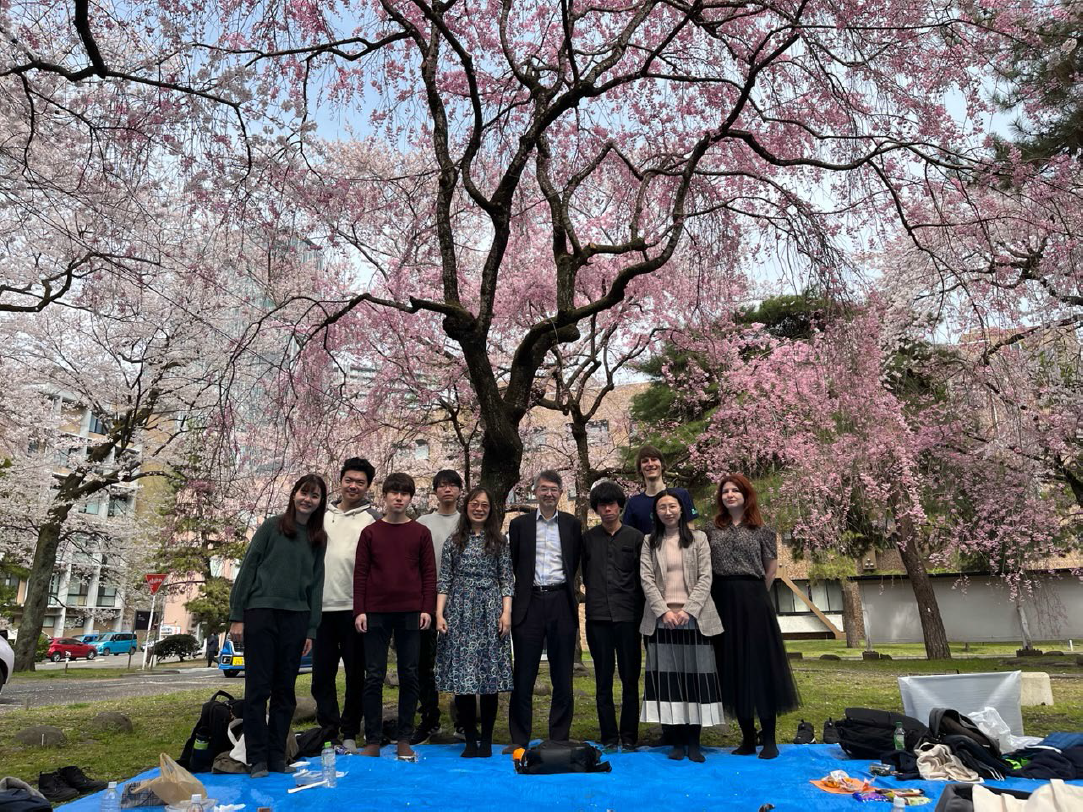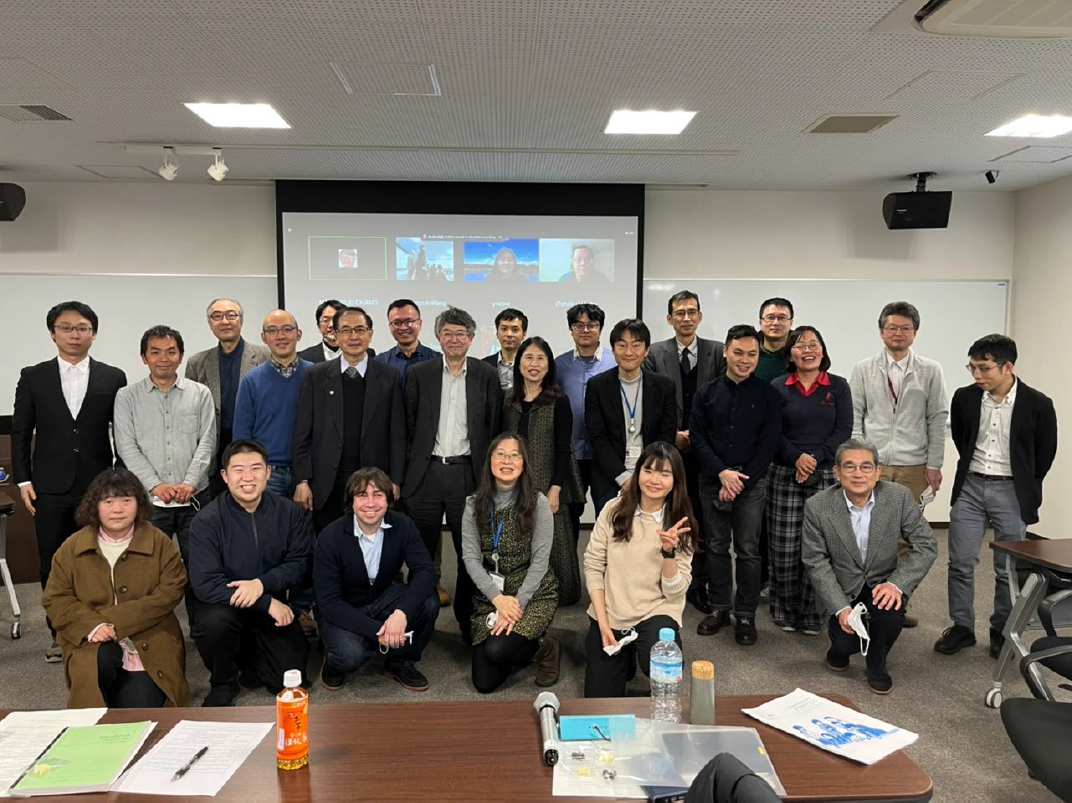Third-year undergraduates will decide on a laboratory in October, but it is hard to know what you will do in a laboratory until you actually enter it. Therefore, we would like to give you a brief introduction to the (Sakamoto) & Tseng Laboratory, what kind of laboratory it is, and what kind of research life you will have.
Third-year Undergraduates
Research Contents
The Visual Cognition and Systems Laboratory was established in 2005. The research in this laboratory focuses on “vision”. As of July 2024, we have 9 members. Because of the relatively small number of members in this laboratory, we are able to provide careful guidance to each student and many opportunities to play an active role in the external world.
The purpose of the laboratory is to elucidate such visual information processing mechanisms of the brain through psychophysical experiments. Psychophysics is a field of study that deals quantitatively with sensation and perception in humans and animals, and uses them as clues to explore the information processing mechanisms in the brain. We are particularly interested in stereopsis, visual attention, and motor vision.
Location
The (Sakamoto) & Tseng Laboratory is located at the Research Institute of Electrical Communication, Tohoku University Katahira Campus. The attraction is that you do not have to climb a mountain and there are many choices of restaurants for meals.

What is research life like?
Basically, there are no core hours at (Sakamoto) & Tseng Lab. As long as you do what you need to do, you can come at any time and leave at any time. However, you should attend the research report meeting at the beginning of the week and the seminar at 3:00 p.m. on Thursdays.
In the student room (M412), a PC, desk, and chair are provided for each individual. There is also a space set aside for experiments. It consists of a PC for control and a booth with a blackout curtain for conducting experiments, where visual stimuli programmed and created by the student can be projected on a monitor. You can use existing programs as references, and there is also a toolbox with useful functions included from the start, so you don't have to be very good at programming. On the other hand, if you are good at programming, you may be able to create a model that mimics the visual functions by yourself. The student rooms are air-conditioned, making them ideal for studying for the graduate school examinations. In addition, a break room with hot water supply facilities is also available.
All faculty members and students are invited to participate in the seminar, where the person in charge of the seminar introduces his/her thesis. Each week, one student will present his/her paper, and the person in charge will rotate twice a semester. You will be taught how to search for papers, which will definitely be useful in the future! You will also have a weekly rotating lecture in the first semester of your fourth year. In the seminar, we will read an English textbook on vision. You will be able to acquire a wide range of basic knowledge about vision.
At the end of the first semester of the fourth year, there will be a presentation of Training A. Here, students select one of the papers presented in the seminar and present it in a joint session with Sakamoto Laboratory (Advanced Sound and Information Systems) and Kitamura Laboratory (Information Contents). Incidentally, the graduate seminar is held jointly with Ito & Nose Laboratory (Intelligent Communication Network Engineering) in addition to Sakamoto and Kitamura Laboratories. By holding joint research presentations with laboratories in slightly different fields in this way, a lively exchange of opinions takes place.
In the second semester, the main focus is on the thesis. The theme of the thesis is decided at the beginning of the second semester. Since the theme is decided after the professor listens to the opinions of individuals, students are able to conduct research in line with their own interests. Rather, students are strongly expected to set their own research themes and pursue their research independently. It can be said that the school is free, for better or worse. The professors are very caring and are always available for consultation.
Although you will continue to have seminars and other classes as in the first semester, they will stop around December, when you will be busy with your graduation thesis, so that you can concentrate on your thesis. Then, in March, we will make a joint presentation with Sakamoto and Kitamura labs. When it is over, it will be spring break!
Besides studying, we also have fun at various events such as Hanami (cherry blossom viewing) and Imoni (stewed potatoes). We participate in the Ekiden (relay relay race) and the electric field day. Those who are confident in exercise are also welcome!

We also plan summer seminar camps and ski trips. For more information, please visit the Events section of our website. We hope to make our laboratory an enjoyable place by holding a variety of events.
We believe that interaction with leading researchers abroad and exposure to different cultures is especially important for the development of young people. Our laboratory has a close relationship with leading researchers abroad (USA, France, UK, Taiwan, Australia, Hong Kong...) When they visit Tohoku University for collaborative research, they have many opportunities to learn about life and learning.
Even the youngest 4th year students have the opportunity to work with international researchers; some of our 4th year students have submitted outstanding research results to international journals and have traveled abroad to present their research findings.

If you are interested in...
If you are interested, please visit our laboratory. We will give you a detailed explanation of the (Sakamoto) & Tseng Laboratory. Please come directly to the student room in M412 on the 4th floor of the new building of the Research Institute of Electrical Communication (RIEC).
If you have any other questions, please send an e-mail to one of the professors or students (You can find the address on the member introduction page). All faculty and students are sincerely looking forward to seeing you.